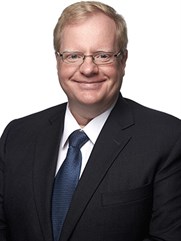 When asked why he accepted the leadership position for the new Center for Infrastructure Renewal (CIR), Dr. Bjorn Birgisson’s answer is simple: “TTI and Texas A&M are the best place in the world to be for infrastructure research.”
When asked why he accepted the leadership position for the new Center for Infrastructure Renewal (CIR), Dr. Bjorn Birgisson’s answer is simple: “TTI and Texas A&M are the best place in the world to be for infrastructure research.”
His claim might sound glib, but it’s born of experience. Trained as a professional engineer in the United States and with extensive experience in the United Kingdom and Sweden, Birgisson is an expert on the current state of infrastructure research and implementation. And he brings that broader perspective to his new roles as CIR director and TEES Distinguished Research Professor and a professor in the Zachry Department of Civil Engineering at Texas A&M University.
“In Northern Europe, you’re taught to think of things from a systems perspective,” he explains. “For example, how does an efficient construction supply chain help in repairing this particular road cost effectively? In the United States, it’s more often more about the methodology itself involved in repairing the road, and the best way to do that.”
Birgisson hopes to combine both—an appreciation for the bigger picture with the focused know-how of the U.S. approach to maintenance—as he shapes the CIR’s strategic direction. His philosophy is an inclusive one that seeks a holistic, multidisciplinary method to solving problems of infrastructure management and development.
“I’m a consensus builder,” says Birgisson. “I like to listen, to talk to people. As we learn to do more with less in terms of resources, finding new efficiencies across disciplines will prove essential to that process.”
He sees the center as an anchor for establishing true leadership in infrastructure engineering around the globe: a place where professionals from various disciplines can come together and share ideas to find unique solutions. Ultimately, the kinds of projects pursued will need to not only fix the potholes of the past, but also look to smart technologies, such as embedded sensors, to help improve the science and timeliness of preventive maintenance.
“Our roads are getting smarter, and that’s a good thing,” says Birgisson. “Our research methodologies have to get smarter, too. So, beyond the day-to-day projects in the center, I want to work with center contributors to create three to five innovative research directions that have the potential to really make a difference. Better sustainability, reduced maintenance costs, safer systems—we must design with these in mind.”
One need look no further than Birgisson’s favorite hobby to understand his strategy for the CIR. He grew up fishing and still sees it as an opportunity for quiet reflection far away from the fast pace of first-world problem-solving. Still, one can see the thoughtful researcher at work, even while he’s at play.
“Both art and science are involved. What are the fish eating, what are the weather conditions? Fishing involves strategy, of course, but also a feel for the fish as you reel him in,” he says. “It requires intuition as much as domain knowledge. Catching a fish is not that different from making a breakthrough in research, when you think about it.” Birgisson is quick to note that he’s a catch-and-release guy, which speaks to his belief in sustainability.
Asked what he’d like TTI to know about him as he takes the reins of the CIR, Birgisson pauses for a moment. “I’d like them to know that I’m going to work hard for them and with them to make this the premier research facility of its kind in the world,” he says. “And one of the first things on my list this fall is to seek endowments and other fundraising opportunities to make the center a success over time.”
The CIR will house researchers developing advanced and sustainable materials and structural systems aimed at reducing cost and extend infrastructure life, safety, resiliency and durability. The center is a shared facility of the Texas A&M Engineering Experiment Station and TTI, and groundbreaking will take place on September 26 at the RELLIS Campus.
Birgisson is the former pro vice-chancellor and executive dean in Aston University’s School of Engineering and Applied Science.